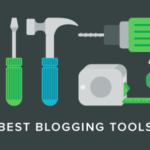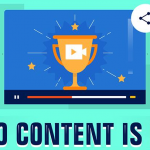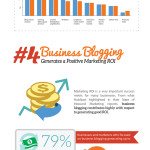Most bloggers spend less than a minute or two crafting a headline. They either jot it down as a half-baked idea before they start writing, or they throw something on top once they’re done. Either way, not much thought goes into the handful of words that lead into the post. This needs to change. Effective titles can make or break your content. Here are five reasons you should pay more attention to your headlines.
Your Content Is Useless Without a Headline
 There are thousands of bloggers who have carefully crafted their research and ideas, only to see the article languish without much traffic or many comments. Meanwhile, a hastily written opinion piece can garner thousands of shares.
There are thousands of bloggers who have carefully crafted their research and ideas, only to see the article languish without much traffic or many comments. Meanwhile, a hastily written opinion piece can garner thousands of shares.
At the end of the day, it doesn’t matter how amazing your content is, how deep your points are, or how engaging your writing and visuals are. If readers ignore your headline on social media and on your blog, then they’re never going to click through to read the article.
If you’re investing significant time and energy into the content you create, set aside more time to write the headline. This might involve A/B testing two options or having an internal brainstorming session to come up with multiple options. All it takes is a few minutes to make your content more memorable.
Once you publish your content, remember to return to it and evaluate what worked and what didn’t. Then, keep the same factors in mind the next time you want to create great content.
It’s Already Hard to Stand Out
More than 2 million blog posts are published every day, which means there are 2 million other articles your audience can read instead of yours. Even if you aren’t competing with every other niche in the universe, you’re probably competing with thousands of experts within your industry. From your peers to major influencers with millions of followers, everyone is publishing content online in 2016.
Failing to invest time in your headlines means your content isn’t going to stand out. Audiences will skim past it when they’re reviewing their RSS feeds. They’ll keep scrolling when they see your content shared on Twitter or Facebook. Even on your own website, they’ll ignore that article in favor of another. If you want to compete with the millions of other articles and content types out there, you need a catchy hook to draw people in.
Vague Headlines Don’t Generate Search Traffic
Most bloggers have a two-part plan for blog post promotions. The first part involves generating traffic through social media channels and outreach. They’re hoping for a sudden influx of traffic and shares that will generate buzz for a few days before the next exciting article comes along.
The second part boosts search engine optimization (SEO). Through smart SEO strategies, they plan for links and generate organic search traffic that continue to drive the article for months after publication. This expands the shelf life of the content and provides the return on investment (ROI) that marketers require.
However, vague headlines rarely make it to the first page of Google. The search engine prefers clear keywords that explain what the audience is going to read about and why they should care. This is why many bloggers create fun headlines and then use a title tag with a serious headline for Google. Failing to create an amazing title that draws people in could hurt you for months in lost links and search traffic.
The Title Shapes the Rest of the Content
Take a look at your editorial team. Are you a one-person show who ideates, writes, and edits all on your own? Or do you have a team of people picking up ideas and creating content that matches headlines and descriptions? Either way, setting aside time to craft a specific headline will determine how the content reads and what it covers.
Headlines introduce keywords and phrases that the writer should use throughout the piece. Any time you write something off the mark, you need to find a way to tie it back to the original thought in the headline. Any points you make have to answer the question posed in the beginning.
Think of headlines as the center lines of the road, making sure cars follow the right path and don’t stray too far from the plan. As an editor, you need to make sure your team stays on track and delivers exactly what you want. That means you need a headline that they can run with immediately. Vague titles will only result in confusion on the writer’s part and frustration for the editor.
Your Headline Addresses Your Target Audience
While this section might seem like a no-brainer, it’s an important tactic that few bloggers use. Your headline should offer direct or subtle clues that indicate who should be reading your work and what they’re going to get out of it. For example, look at these two titles:
- Data 101: What You Need to Know About Google Analytics
- 12 Hidden Google Analytics Features You Never Knew About
The target audience for these articles are completely different. The first article should attract interns and audiences who are new to the world of analytics. They might want a guide to help them use the tool or a brief rundown of what it is. The second article attracts audiences who have worked with Google Analytics for years. They won’t care about the beginner articles, but they’re interested in expert ways to make their data better.
As your editorial team grows, try to add extra words and phrases that address the article’s intended audience. This will help your outreach process when you promote the piece. It can also help your SEO, as Google will serve the right content to the perfect target audiences.
Next time you need to write an article, take some time at the beginning to brainstorm multiple titles or ways to convey what you want to say. These extra few minutes could lead to better ideas, more traffic, and improved SEO. After all there are a lot of ways to take your title from meh to amazing.









